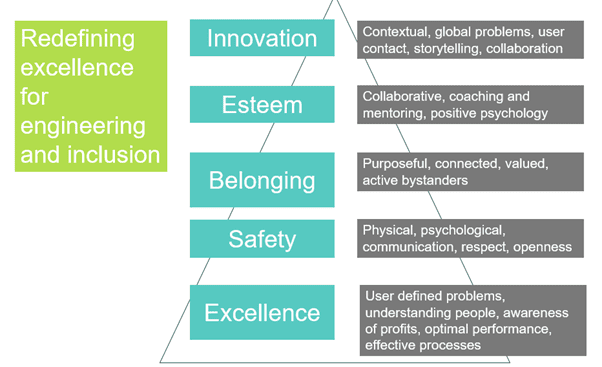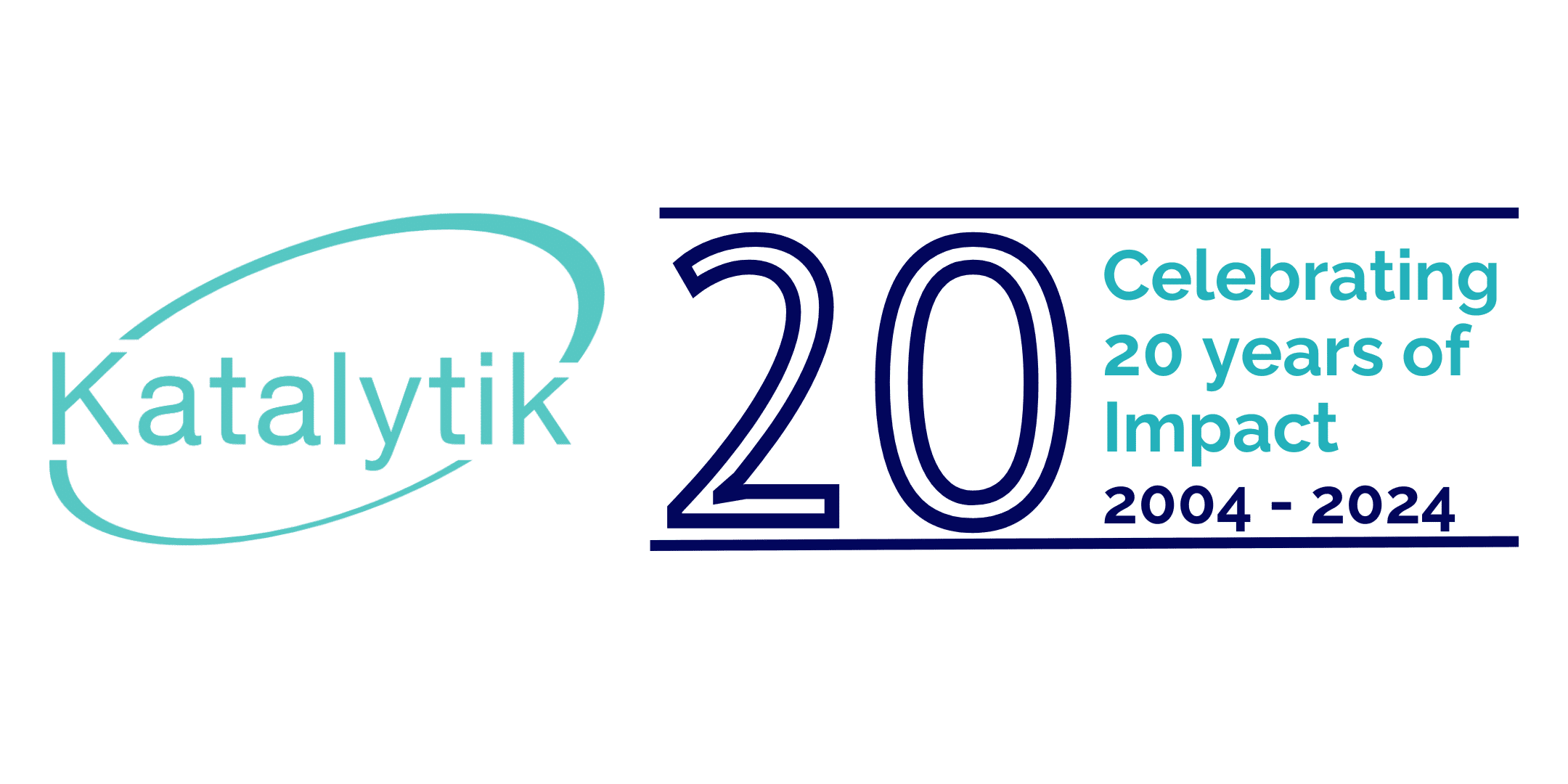
Engineers are fixers. They are driven by identifying, investigating and eradicating problems. Yet the uptake of equality and diversity programmes across engineering has been slow.
If enriching the student experience, closing the achievement gap and maintaining the diversity of your cohort into relevant work is important these five points will help. The are designed to build creative, engaged and innovative teaching and learning spaces and support people to produce inclusive solutions.
Download Katalytik’s Manifesto for Better Engineering (pdf)
1 Excellent teaching, excellent engineers, excellent engineering
Excellence is what you strive for and get measured on.
What is your peak performance on engineering and its teaching? What is your peak performance on inclusion? And how do you measure the student experience? Do you know who your students are? And how they learn? Breaking down engineering education and asking how or what can be done to improve the learning outcomes can stimulate thinking and conversations.
2 Safe place to work and learn
Imagine if everyone on your staff or in your student cohort could say they feel safe and can be the best version of themselves, without fear of risk, reproach or ridicule?
Monitoring and adjusting practices to achieve a high standard across all that you do means people in a minority group feel valued. As a result you will build understanding and inclusion. Your acceptance of the cognitive burden of a minority person faces daily means they have more time to think. It means you don’t question their commitment. But your understanding that they may be second-guessing what is expected, or safe, to contribute means they can participate more freely in projects and discussions.
Setting standards for the language you use, a professional approach in communications and clarity on styles and phrases is vital. Knowing what constitutes illegal communication: verbal threats, racism, hatred and innuendo that would be subject to prosecution [2] might be level 1. But level 2 will be when a student or tutor feels they can share who they really at the start, not the end, of a course.
3 Belonging
Feeling like you belong is so important. It can be so easy to exclude people unintentionally. For example, not speaking to female students in class and not noticing some contributions. Small, repeated biases evident in everyday acts and comments can accumulate. But there is hope. Subtle and not so subtle shifts convey messages that can increase a sense of belonging.
See Why is my curriculum white?[1]
How do we know how people feel unless we ask?
Engineers are stereotyped to be logical, rational and un-emotional beings. Yet, many are not. Those who aren’t may strive to be and suppress natural, more emotional, tendencies. Those who are need the tools and experience of connecting and checking in with their peers and colleagues. All this leads to building bridges, belonging and engagement.
4 Esteem and career confidence
In 2019 there’s an esteem and confidence gap for minority and women students, or students who don’t like the competitive environment often found in engineering. So, white male dominated courses can isolate students who are more culturally familiar with a collaborative rather than competitive approach. And introverted or sensitive students can lose their engineering confidence. The few become fewer as they leave.
One solution to build esteem is experiencing and practicing formative feedback. Further, learning to ask good questions and introducing coaching styles of communication can contribute to professional skills’ growth. And you will find these build a powerful sense of belief and usefulness within us. When coupled with technical competence this creates confidence that we are a member of the professional engineering community.
5 Innovation
Combining technical knowledge with inclusive thinking, behaviours and practices. This will provide inclusion-led innovation when engineers: connect with and value human differences; and explore population groups to inform design thinking. A fertile landscape of cross professional interactions, research, and new conversations will contribute to solving the immense challenges facing society. Engineering and design become innovative, driven by inclusion.
You may have colleagues who can’t get past inclusion as political correctness. People who have had equality and diversity ‘done to them’. Or maybe their focus is on more outreach. The manifesto is about encouraging everyone to move beyond the representation and data level. To stimulate thinking about changing the conversation. To focus on inclusion, belonging and better engineering.
If inclusion seems to be limited to unconscious bias, accessibility of learning materials and role models. We need to talk.
Connect with us.
If you can’t shift the mix of your student or staff body to make it more diverse, how are you making sure that all those in a minority are having the same quality of learning or working experience as those in a majority? Get in touch.
We offer coaching, consulting and training.
Connect with us on LinkedIn and Facebook
[1] https://www.nus.org.uk/en/news/why-is-my-curriculum-white/
[2] Section 127 of the Communications Act 2003
